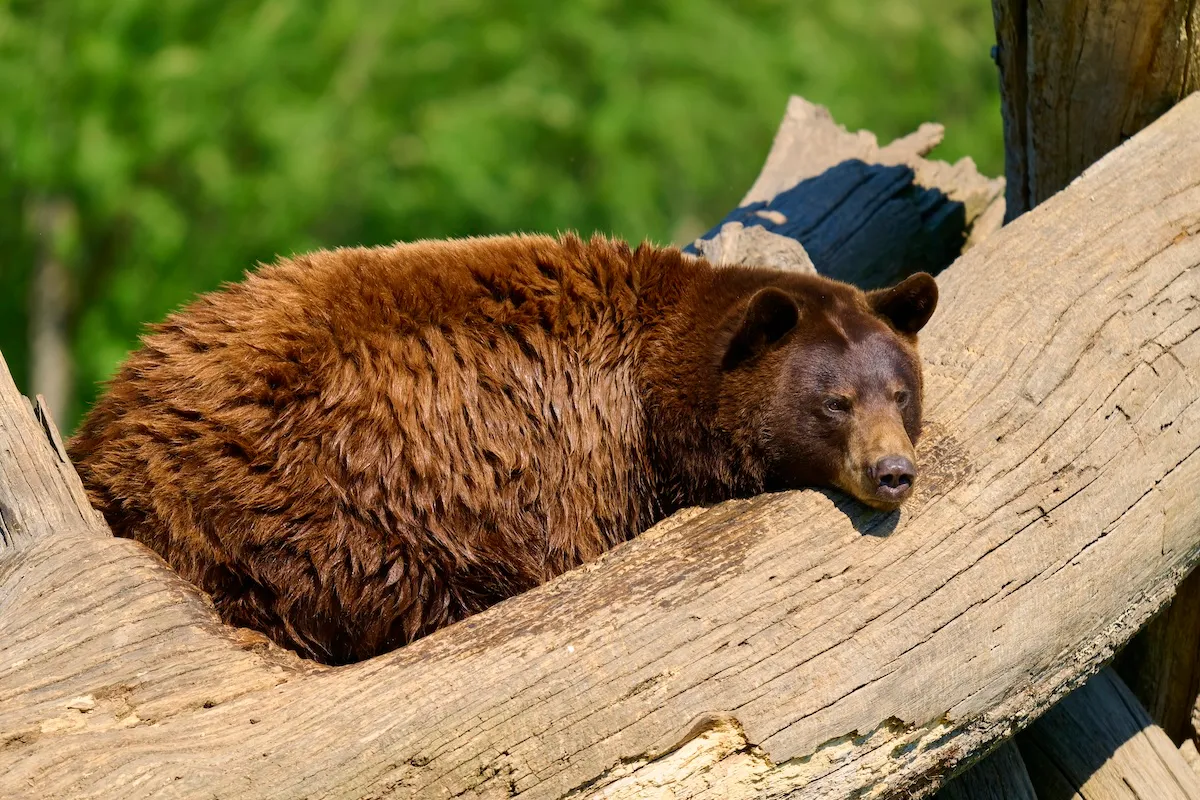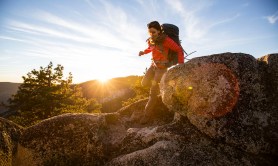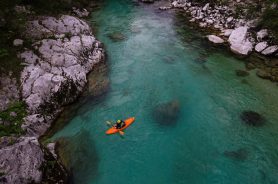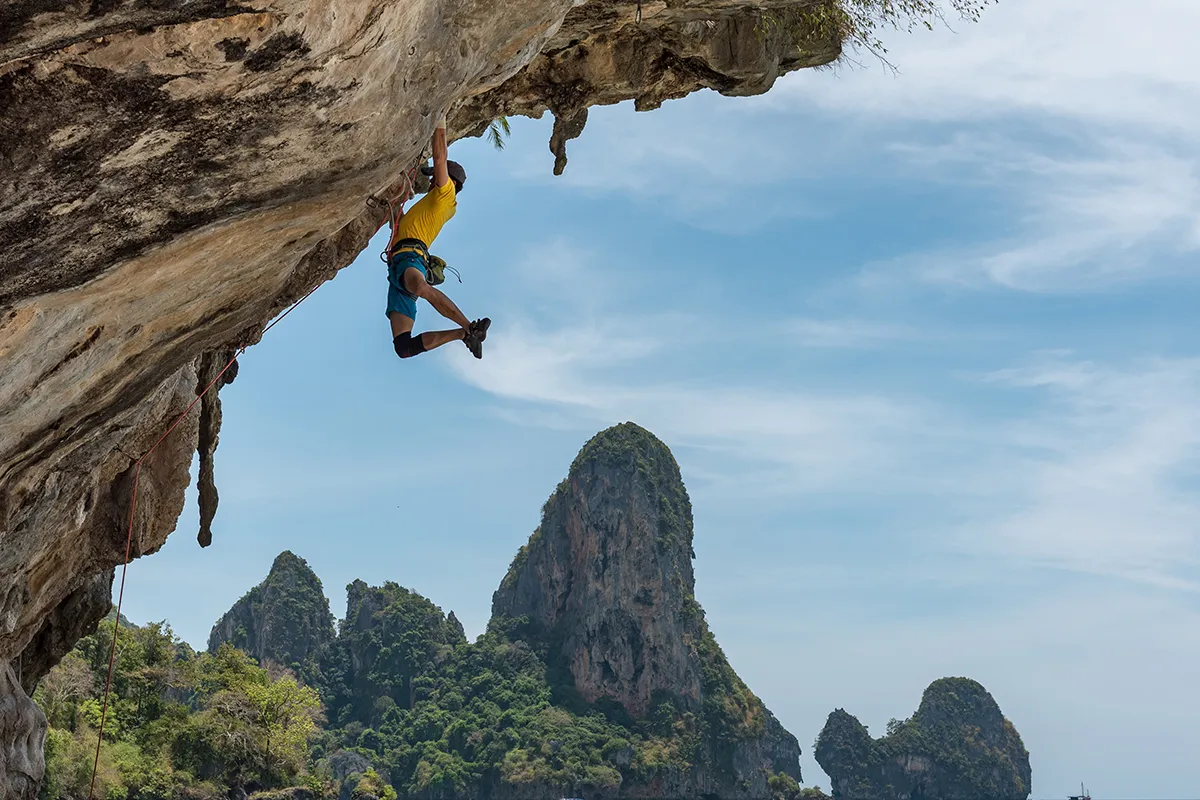

The new year is a great opportunity to make changes and take advantage of the buzz to challenge yourself to do things you’ve never done before—like outdoor rock climbing. If you’re a gym climber looking to gain an edge in your climbing as part of your goals for 2024, then climbing outside is a great place to start. Some people say going from climbing indoors to climbing outside is tough. There are new obstacles, like the mental aspect, and the skill set is increased, but the transition from climbing indoors to the outdoors is possible for any climber.
Videos by Outdoors
What to Expect Climbing Outside

When you’re climbing outside for the first time, it’s going to be an incredible experience—you’ll get to spend time outdoors, pull on real rock, conquer your fears, and most importantly, have a ton of fun. It might be helpful to learn some key differences before you head out to the crag for the first time.
There Are No Colored Holds
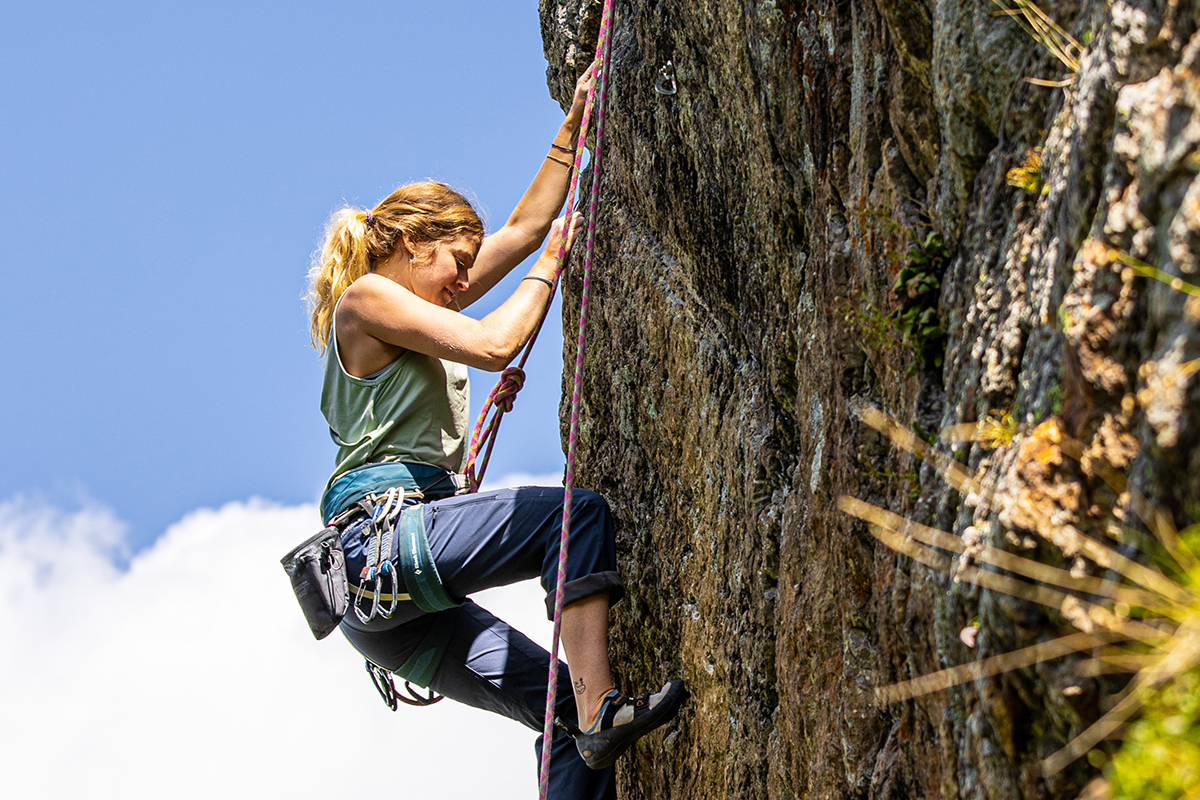
Without colored holds, route finding is trickier, which can be a challenge when you’re first making the transition to climbing outside. Listen to your body’s natural suggestions and you might be surprised at what you accomplish. We all have a natural sense of our body in space which is called proprioception, some scientists even call it the sixth sense.
Your Hands Will Hurt
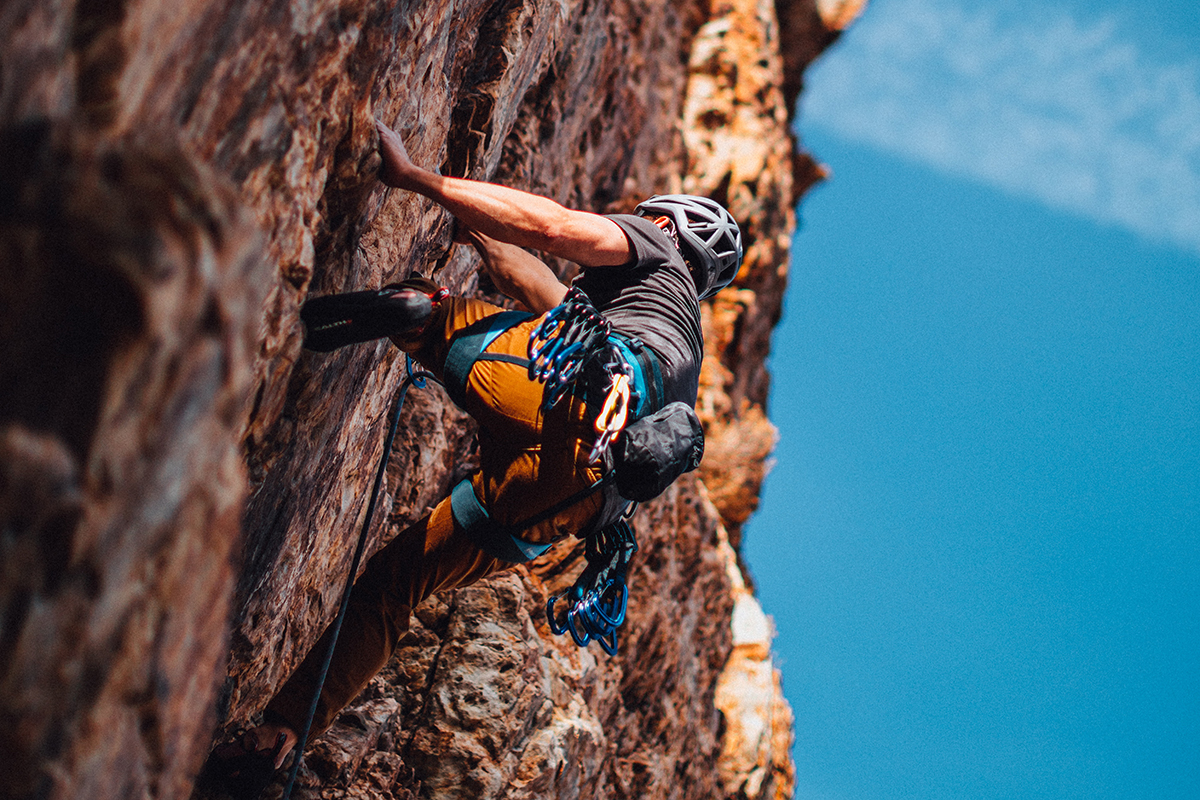
Real rock is sharp. Depending on where you choose to climb, the rock type will offer a different texture. Granite like in Joshua Tree and Yosemite, can be both smooth or rough depending on the specific climb or area. Sandstone tends to be gentler on the skin, but climbing too much will rub away your top layer of skin and leave your hands with sore, tender red fingertips.
Grades Might Feel Different

Although the same grading system is used indoors and outdoors, climbing outside can often feel more difficult. Don’t take the grades personally and try to evaluate your ability based on this new separate skill, be careful not to compare yourself to what you can do indoors. It’s helpful to use your indoor level to figure out what climbs to try, but remember to be patient, as you may not be able to execute to your physical level while you’re learning to overcome the new challenges of climbing outside like the mental aspects, learning how to move on different rock types and the added complexity of route finding.
Weather is a Factor
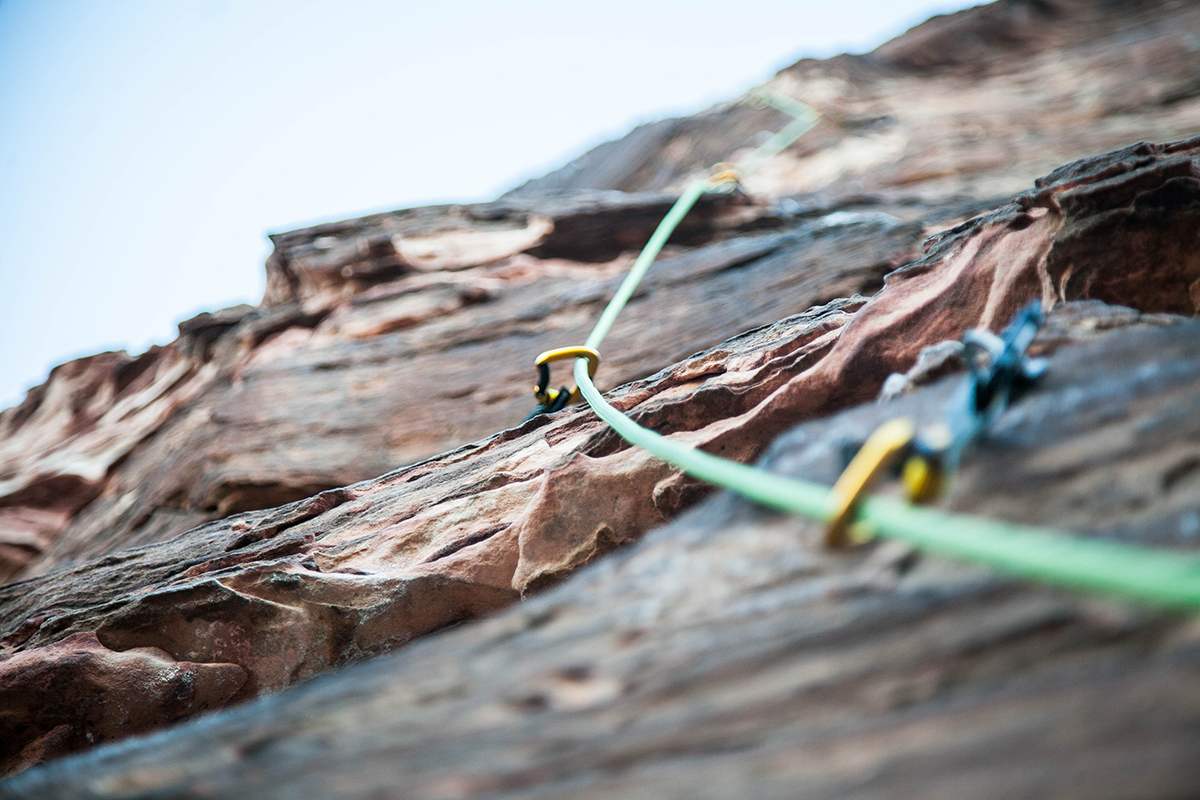
It might seem obvious, but don’t forget to check the weather beforehand. Indoor climbers are used to having perfect weather every day at the gym, so climbing outside will be dependent on comfortable temperatures, moderate wind speeds, and of course, no rain in the forecast.
Get the Gear
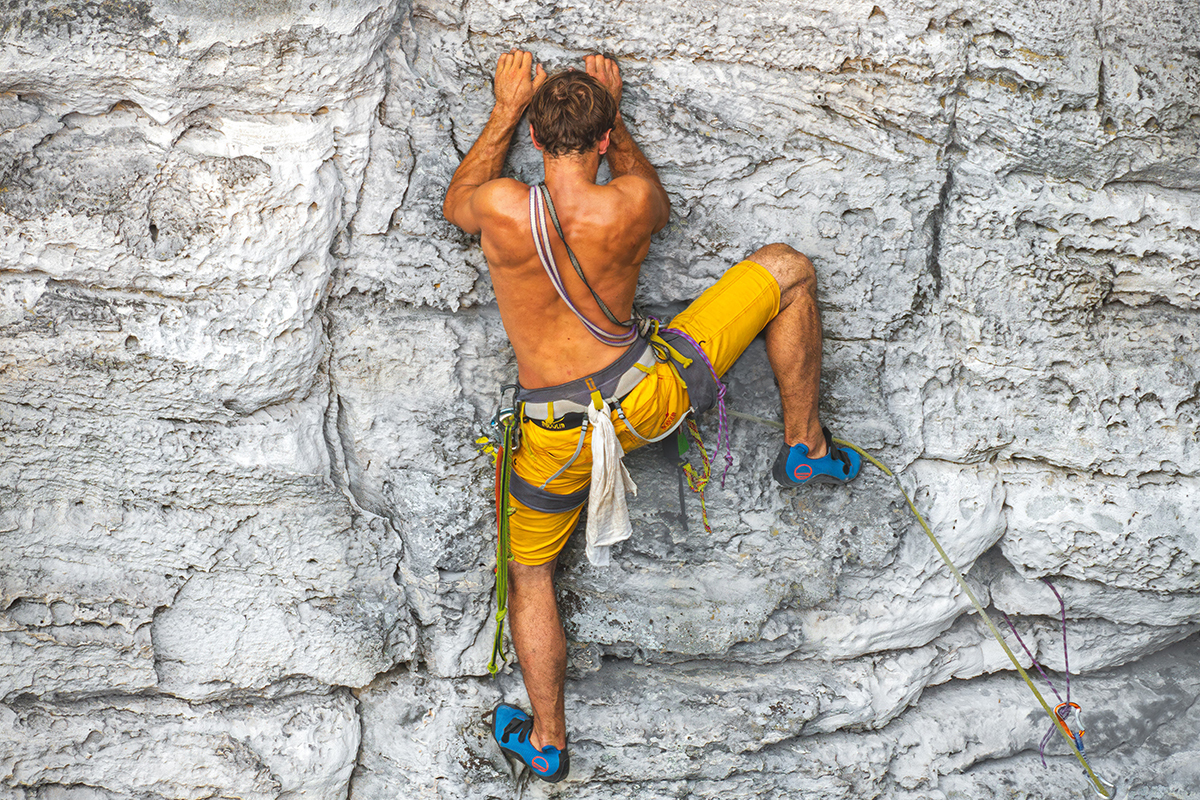
It’s no secret that to climb outside, you will need a more complex set of gear. The gear differs depending on your specialty.
What Gear to Pack for your first Outdoor Rock Climbing Trip
- Bouldering: shoes, chalk bag, crash pad
- Sport Climbing: rope (usually 60 or 70 meter length in the U.S., 50 meter is standard in Europe), chalk bag with waist belt, rope, harness, belay device and locking carabiner, quickdraws, helmet, personal anchor and locking carabiner, belay glasses (optional)
- Trad Climbing: chalk bag for your waist, rope, harness, belay device and carabiner, helmet, standard trad rack. A standard rack will include slings, carabiners, nuts, cams, alpine draws or quick draws, and a nut tool.
Bouldering is certainly the simplest way to transition to outdoor climbing gear-wise, a crash pad typically ranges from $150-300, and sometimes local businesses offer rentals. Sport climbing involves more gear than bouldering, but gives you the added security of a rope, and the familiarity of clipping quickdraws. Since trad climbing, or the traditional practice of placing “pro” as you climb, is not a style you will encounter in the gym, it would be smart to hire a guide for your first time. If you decide you’d like to continue trad climbing, you can then look into investing in a trad rack, and all the necessary equipment for this style of climbing.
Bouldering vs. Rope Climbing Outside

Sometimes climbers prefer to start climbing outside by bouldering or top roping to ease into the experience. When bouldering outside, you’ll need to learn the skill of spotting, falling, noticing potential dangerous falls, and placing pads in the correct spot to protect yourself and the climbers you’ll be spotting.
Top roping can be a fun way to start climbing outside without the extra stress of clipping. Those new to climbing outside may want to consider asking locals or forums like Mountain Project for advice on whether a certain climbing area is suitable for people new to climbing outside. For example, bolts can be very sparse in places like Joshua Tree or Smith Rock. Areas much more friendly for beginners may be Ten Sleep, Red Rock, or the Red River Gorge. The best places to learn to boulder are the Southeast bouldering triple (Horse Pens, Little Rock City, and Rocktown), Red Rock, and Hueco Tanks. A good place to learn to trad climb is Red Rock or Squamish, B.C.
It is important practice rope systems indoors or at a teaching area at the crag, before heading up your first route to eliminate safety issues.
Training for Climbing Outside
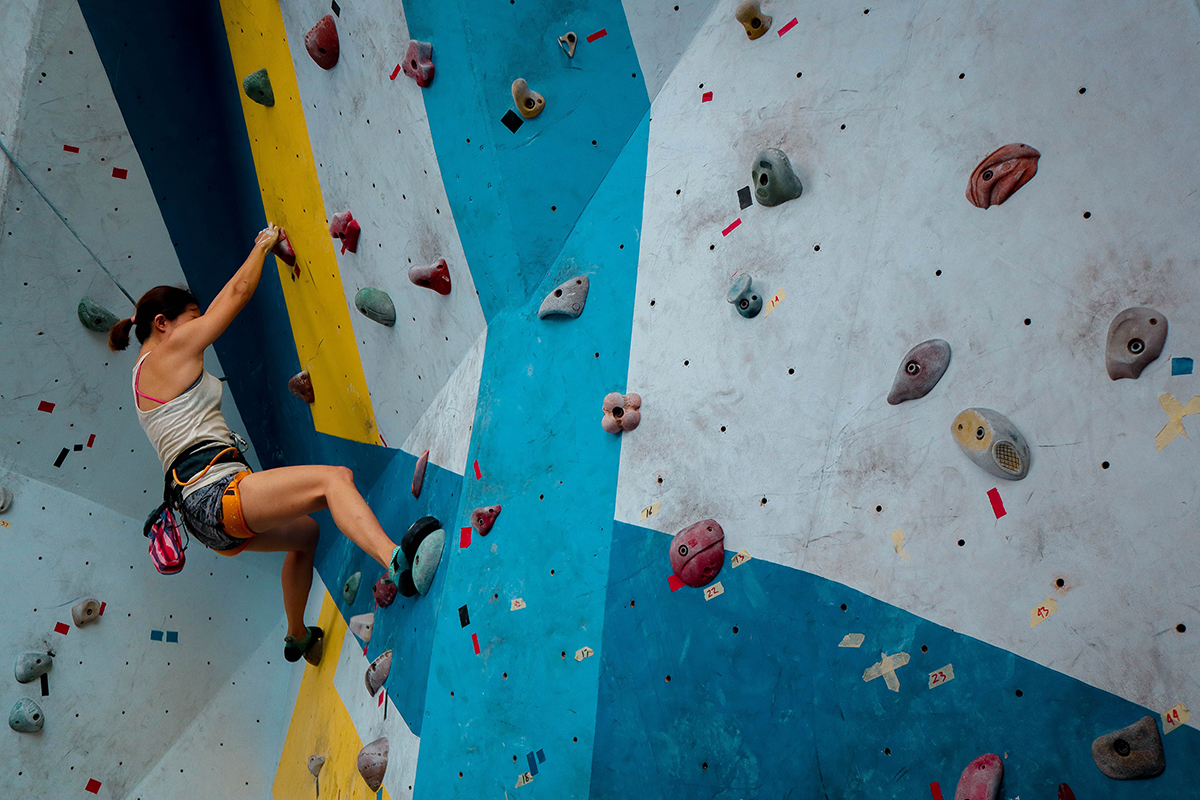
We sat down with Eric Horst, author of Training for Climbing, founder of Physivantage, and renowned climbing coach to get an expert’s opinion on the best ways to get ready for your first time climbing outdoors.
“The main difference between climbing indoors and climbing outside is the nature of the hand and foot holds. There are larger holds indoors and they are completely different to climbing holds outside. Unless you’re climbing in a place like the Red River Gorge where the 5.9 climbs have holds like huge dinner plates, the holds will be completely different.”
Eric suggests working on flexibility and endurance as adjustments to your training plan when first transitioning to climbing outside. Flexibility in climbers is often overlooked and your hip mobility may be far more important when climbing outside than inside. Without color-coded holds, it’s not as easy to maneuver sequences and flexibility may become a more important factor than with climbing inside.
“There’s also a mental factor to climbing outside, you may get more excited but you’ll also be nervous about navigating blocks of rock and falling.”
Learning about mental training and how to overcome your fear, may be part of the adjustment to climbing outside.
Eric suggests adjusting your training sessions by increasing your overall aerobic capacity to train for climbing outside. This means increasing the volume that you climb in your indoor session (number of pitches or boulders) and also your capacity to perform different types of fitness activities in one day.
“Climbing inside your sessions may last 1-2 hours. Outside you have to be prepared to add long hikes and difficult approaches on top of the climbing. You’ll be climbing many different pitches for up to 6-8 hours.”
Indoors, you may not have the added cardio you experience outside and this can affect not only how much fun you can have, but also how much you can climb.
Tips For Transitioning to Climbing Outside

Climbing Coach Taylor Fragomeni recommends a balance of technique, pacing, practice, and warming up properly when climbing outside after gym climbing most of the time.
Use these tips to transition to climbing outside:
- Perform a thorough warm-up, maybe even at home if the crag doesn’t have good warm-ups. Include cardio that raises the heart rate to build heat in the body.
- Find a mentor. Go with someone with more experience who can guide you through processes and increase safety.
- Feet outdoors can be smaller and there will be more options. Be prepared to experiment and have the confidence to stand on the smaller footholds.
- Pace yourself by mixing harder and easier climbs. Make sure to start by trying easier climbs to get used to the rock and warm up your body.
- Practicing clipping indoors can help prepare for the less secure clips that you may find outdoors. Master the skill inside, then take it outside!

